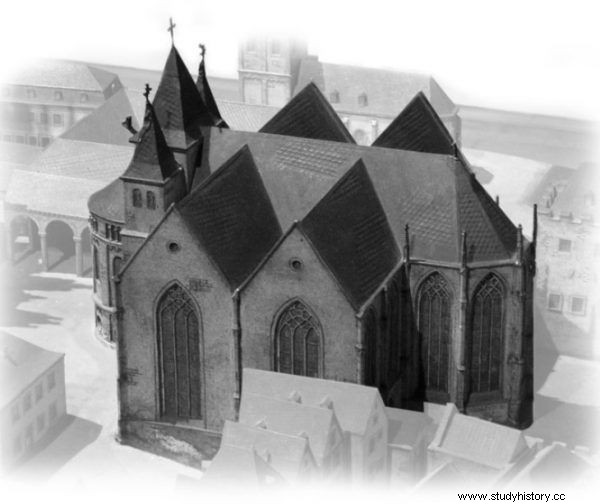During her lifetime, she was one of the richest and most respected women on the continent. When she died, greedy lords stole her family's goods. But the most valuable trophy turned out to be ... her own body.
The posthumous fate of the first Polish monarch - the wife of Mieszko II crowned with him and his father in 1025 - are no less fascinating than the paths of her life. Rycheza died in exile in Germany. She was an ailing old woman reaching seventy. She watched the fall of her whole family, she survived the death of her husband, son and all brothers. She was terrified that when she herself died, she would be scorned and forgotten.
In recent years, she has spent enormous amounts of money to ensure a dignified burial and constant prayers. She donated money and wealth to countless churches. She also prepared a grave for herself in the family mausoleum and… paid for her own funeral.
A funeral planned down to the last detail
In a special document (issued six years before her death!), She planned the march of her funeral procession down to the last detail. She gave a generous gift to the bishop of Würzburg, in return expecting that he would personally escort her body to Brauweiler near Cologne and ensure that it was buried in the right place. Should this prove impossible, the suffragan would see to it that the escort of the "mighty and devoted matron" consisted of at least "six distinguished priests and six deacons."

Queen Riches and her brother Otto. Modern painting.
Probably no woman of this era has done as much to ensure a good death. Ironically, neither of them was treated so shamefully after their death. As soon as the queen's body had cooled down, it had already become a prop in political games.
Body theft and power theft
The most powerful man in the country, the Archbishop of Cologne Annon II, has just kidnapped and imprisoned the underage ruler, Henry IV. Now he has decided to show once again that he can do anything. In March 1063 he abducted ... the coffin of the Polish queen! Instead of going to the Ezzonid family mausoleum, he had her taken to one of the churches in Cologne.
He buried her, donating a special plaque in which he attributed to himself all the merits related to the commemoration of the remembrance of the remarkable ruler. At the end, he collected a considerable fee. Rycheza inadvertently ordered the church in which her body would rest to receive a significant part of her property. Annon, of course, decided that the money owed him.

Thanks to the book by Kamil Janicki, you will learn about the history of the women who saved Poland. An uncompromising story of the fall of the Polish empire. Buy today with a discount on empik.com.
Rotting theater for people
This was the end of the cemetery kidnapping story. But the series of grievances to the late Riches was by no means heading towards the end. Every year on the anniversary of her death, the monarch's coffin was opened so that all guests of the Church of St. Maria ad Gradus could see the rotting bones.
The remains, exposed to air and moisture, deteriorated more and more. The nose quickly rotted and fell off, so it was replaced with a dummy made of wood. The empty eye sockets were flooded with wax. The mandible, when the skin had come off it, was strapped to the skull and placed with it on a golden pillow. The temples, wrapped in a scarf, were crowned with a crown. Anyway, stolen somewhere at the end of the modern era.
All this so that every curious person could almost touch what was left of the former queen. Most importantly, so that he could read the inscription in honor of Ann.

Church of Saint Maria ad Gradus in Cologne. It was here - against her will - that the first Polish queen was buried.
A Restless Eternity
The custom was abandoned after several hundred (sic) years, but even then the ruler's bones were not safe. The coffin was opened in 1852 and 1913. In 1959 one of the vertebrae of the spine was removed from the grave and sent to the monastery in Brauweiler. In 1975 a fragment of the queen's rib was removed.
The monks from Tyniec received it as a gift. In 2001, Rycheza lost another rib. This time the parcel went to Klotten on the Moselle. The monarch's resting place has been violated for the entire millennium, almost year after year. And it's hard to say if she will ever be able to be at peace.
***
Women who gave Poland the crown. An uncompromising story about times of decline and moral decay. Striking silhouettes of great scoundrels. And a story that returns the dignity to the most important ladies in the history of the Polish Middle Ages. You can order Kamil Janicki's book "Damy z skazą" at empik.com today.
